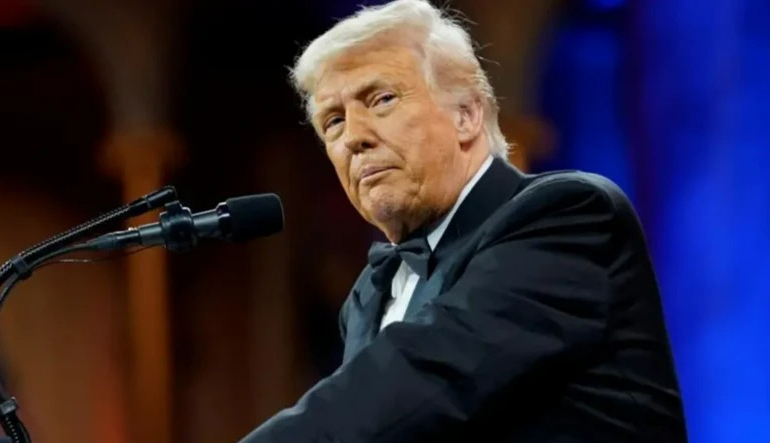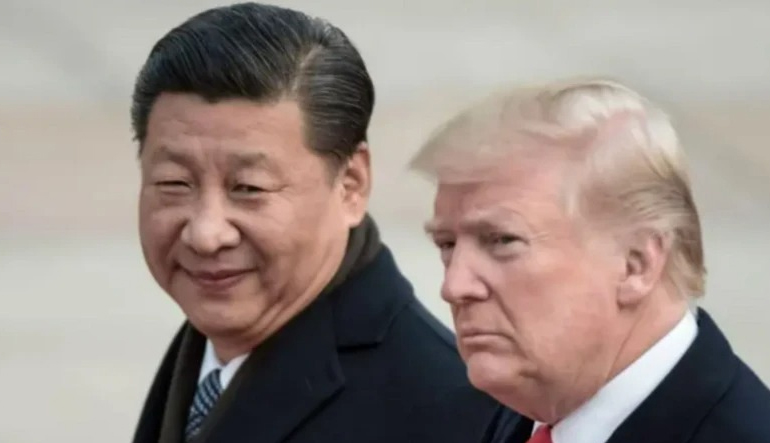Suddenly, the true target of U.S. President Donald Trump’s trade war has become clear. Instead of opening fronts against the entire world, this U.S.-China economic conflict now appears to be centered between the U.S. and China, intensifying ongoing U.S.-China trade tensions. The additional Trump tariffs imposed on dozens of countries just days ago have been paused for 90 days. However, under the current U.S. import policy, all countries will still face a 10% tariff. But China—often described as the world’s factory, producing everything from iPhones to children’s toys and supplying 14% of total U.S. imports—has been singled out for a harsh response, with tariff escalation reaching as high as 125%. President Trump stated that this increase is in response to China's tariffs on U.S. goods, which stand at 84%. Referring to China’s move, Trump said it was akin to "showing no respect"—an act he interpreted as part of the broader trade retaliation. After China announced its 84% tariff on American imports, President Trump, in his first response, urged businesses to consider relocation to the U.S., calling it the "right time." Posting on his social media platform, Trump issued a Truth Social statement: "This is the best time for your company to move to the U.S." He added: "Zero tariffs and nearly instant power or energy connections and approvals—no environmental delays or waiting. Don’t wait." But for Trump, this is not just about respect or retaliation. It’s part of Trump's broader economic agenda—a plan to complete Trump’s second-term goals that he believes remained unfinished in his first term. Speaking to journalists, Trump said: "We didn’t have the time to do the right thing back then. Now we are." Trump aims to dismantle the established global trade system in which China has secured its dominant role. Simultaneously, he is challenging the long-held belief that more trade is inherently a good thing, pushing instead for an American manufacturing comeback. To truly understand Trump’s perspective, we need to go back to a time when no one imagined he would ever become the President of the United States.

Trump's goal is to dismantle the established system of global trade in which China has become the 'factory of the world'.
From Global Darling to Strategic Rival: How China Rose to Power in the Eyes of the World
In 2012, when I first reported from Shanghai, China’s economic rise, China’s economic capital, it was a time when the entire world was eager to trade with China. Global trade with China was booming, and China as a global power was becoming undeniable. Global trade leaders, Chinese officials, heads of state, business delegations, foreign correspondents, and economists—there was a rare consensus among all of them. The reason was simple: the global economy was thriving because of China. Affordable goods were widely available, China’s supply chain dominance was expanding rapidly, and while China was building an army of factory workers, multinational companies in China were gaining access to an invaluable new pool of consumers. Within just a few years of my arrival in China, the country had overtaken the United States to become the largest market for Rolls-Royce, General Motors, and Volkswagen. Behind all this was a belief that as Chinese citizens gained more wealth, they would eventually demand political reforms—and that this new mindset would also transform China’s role in global trade.
The China-U.S. Trade War: How China’s Rise and Trump’s Tariffs Reshaped Global Economics
However, this did not happen, and the Chinese Communist Party strengthened its grip on power. In 2015, the "Made in China 2025" policy was published, which outlined a vision of becoming a global leader in key manufacturing sectors, including electric vehicle production in China, with state support. A year later, an unfamiliar American political figure set his sights on the presidency and introduced the idea that China’s economic rise had hollowed out the U.S. economy, leaving local workers without jobs and a sense of dignity. When Trump became president, the first round of the China-U.S. trade war began, and the global consensus on China’s economy shattered. His successor, President Joe Biden, did not reverse most of the Trump tariffs imposed on China. However, despite the significant pain China experienced, its export-driven economic model was not completely altered. China now produces 60% of the world's electric vehicles, and the majority of these are manufactured by domestic companies, with 80% of the batteries also being produced in China. This highlights China’s manufacturing dominance and its central role in the global trade system. Now, Trump is back, and a new phase of the China-U.S. trade war has begun. It could have been the biggest blow to the global trade system if Trump had not recently reversed his decision to impose tariffs on many countries. But the most important question now is: what will happen next? It depends on two key questions. The first is whether China will accept America’s offer to negotiate. And the second is, if China agrees, will it be willing to offer the concessions the U.S. wants? This includes demands for China to change its export-driven economic model and align with the U.S. economic model.

China's economic strength depends on the domestic market, including exports, and both are linked to the survival of the country's political system as well as national integrity.
The High Stakes of U.S.-China Relations: How Tariffs Could Reshape the Global Economy
The answer to this question could be that we are currently in a place where very few people have been before, and no one knows what China's response to U.S. tariffs will be. However, there are many reasons that force us to proceed with caution. China’s economic strength depends on both exports and the domestic market, which are closely tied to the survival of its political system and economic stability. The desire to maintain control over information makes it difficult for China to open door to American tech companies. But there is also a third question, and this answer must come from the United States. The question is: does the U.S. still believe in a free trade system? Trump often says that tariffs are beneficial. They promote local investment and tax revenue and encourage American companies to operate within the country, which could reshape the global economy. And if China believes that the real target of Trump's tariff strategy is indeed them, they might not have any reason to negotiate. In this case, the two largest economic powers in the world would enter into an economic power struggle, where the victor could become the world's most dominant economic force. And if this happens, a very different and potentially dangerous future for global economic conflict and the future of trade negotiations may lie ahead.
What is the impact of the tariff war on China and the US? Analysis by Stephen McDonnell
According to a recent announcement from China’s Ministry of Finance, tariffs on all goods from the United States have been increased from 34% to 84%, marking a significant escalation in the U.S.-China economic conflict. This move is a major blow for any American company seeking to sell goods in this vast market, and undoubtedly, it will stir further global trade disruption, especially in the U.S. market. The economic consequences of tariffs are already becoming apparent, and it is possible that more actions will follow from Beijing, signaling that the Chinese government is not in the mood to back down. China’s retaliation appears to be in full swing. Beijing had already warned that if Donald Trump proceeded with his plan to increase U.S. tariffs on Chinese goods to 104%, China would take severe retaliatory measures, and now we are witnessing the beginning of that response in the form of increased tariffs. Stephen McDonnell’s analysis suggests that this intensification will affect China-U.S. trade relations deeply. State media in China has been seen mocking countries on social media that are pleading with Washington to remove tariffs. They claim that these actions are only strengthening Trump’s position and are further complicating trade negotiations between the U.S. and China. In contrast, Beijing states that it supports multilateral trade efforts where rules apply equally to all. This stance may gain support from Southeast Asian countries such as Thailand, Cambodia, and Vietnam, which have been severely affected by U.S. tariffs. If this continues, global economic stability may be at risk, as both the U.S. and China are key players in the world economy.
Powered by Froala Editor


